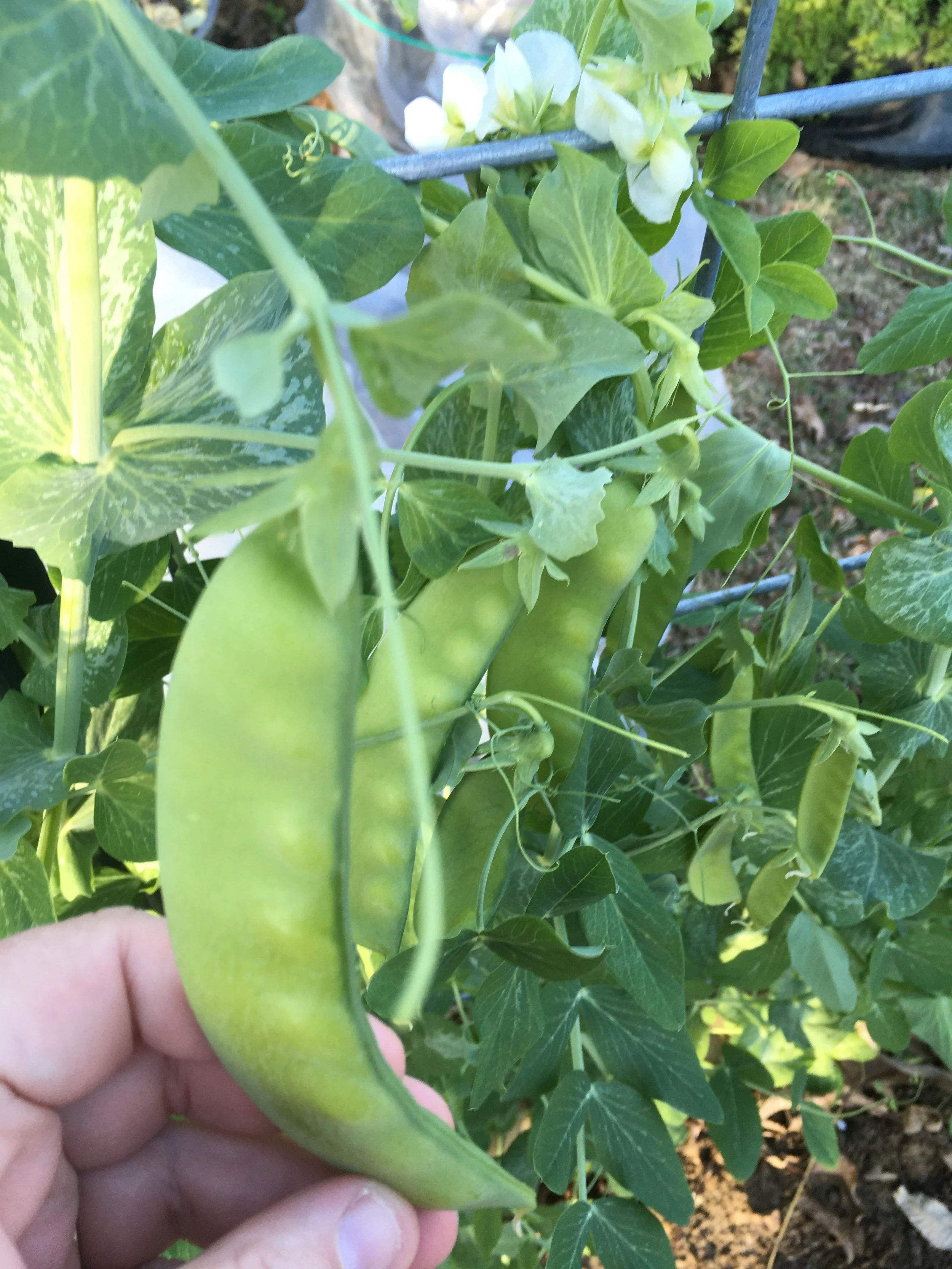How to Grow Sweet Peas
Links on this page may contain affiliate links.
There are two different groups of peas: 1) cowpeas/southern peas - like black eyed peas, and 2) sweet peas - like english peas. This blog post is about sweet peas.
Types of Sweet Peas
There are three categories of peas in the sweet pea group, which can be confusing if you do not know the difference when ordering seeds:
shelling/english peas - you remove peas from the shell, as the shell is too fibrous to eat once the peas inside are of an edible size,
snow peas - you eat the entire flat pod (garden snacks or in stir fry), and
sugar snap/snap peas - you can eat the whole pod, but the peas inside are bigger than those in snow peas.
You can grow all three, or select particular seeds for particular recipes. Sweet pea leaves and stems are also edible, and are delicious raw or sautéed (please note that ornamental sweet pea flower leaves and stems are NOT edible).
Snow Peas
Growing Sweet Peas
Sweet peas have tendrils, and will climb just about anything, even each other. They will be easier to harvest if you give them a trellis or teepee to climb. We grow them on our garden arches (most varieties will not get very tall and are very manageable).
They are so easy to grow! Simply sow the seeds into the garden soil directly. Although you can start pea seeds indoors, it is not necessary in most areas. Most sweet pea seeds will germinate in temperatures between 40 and 70 degrees F. Sow the seeds 3-6 inches apart and no more than half an inch deep. Water the seeds in, but only until the soil is moist, not soggy. The warmer the temperature, the quicker the seeds will germinate. Most sweet peas mature in 50+ days, and the plants will not survive a hard freeze, so make sure you sow the seeds well before winter if you are growing them in the fall.
Pea blooms



